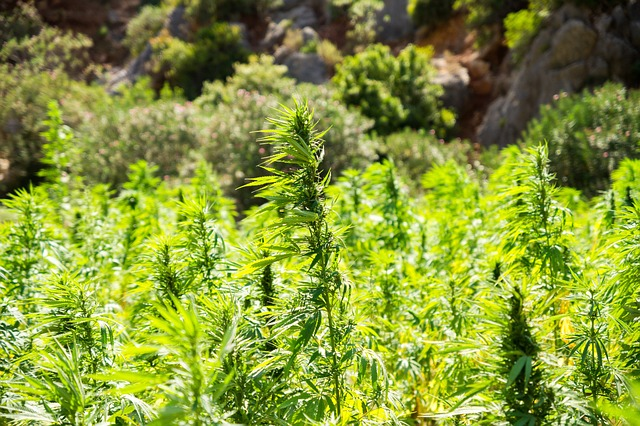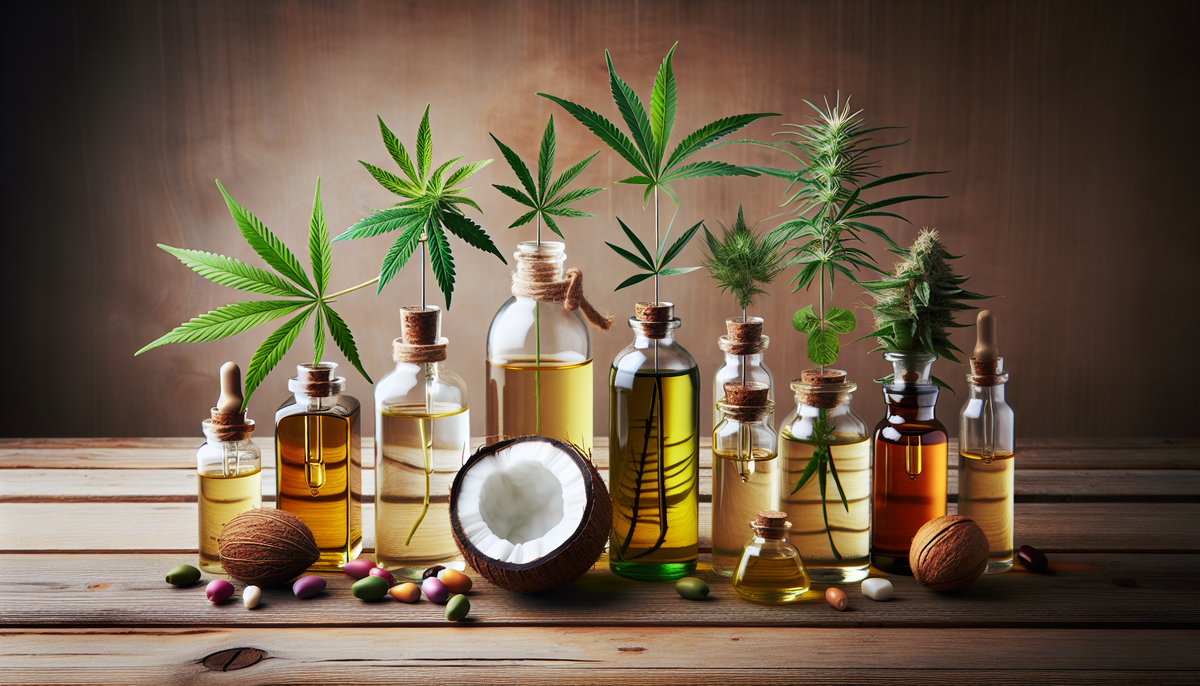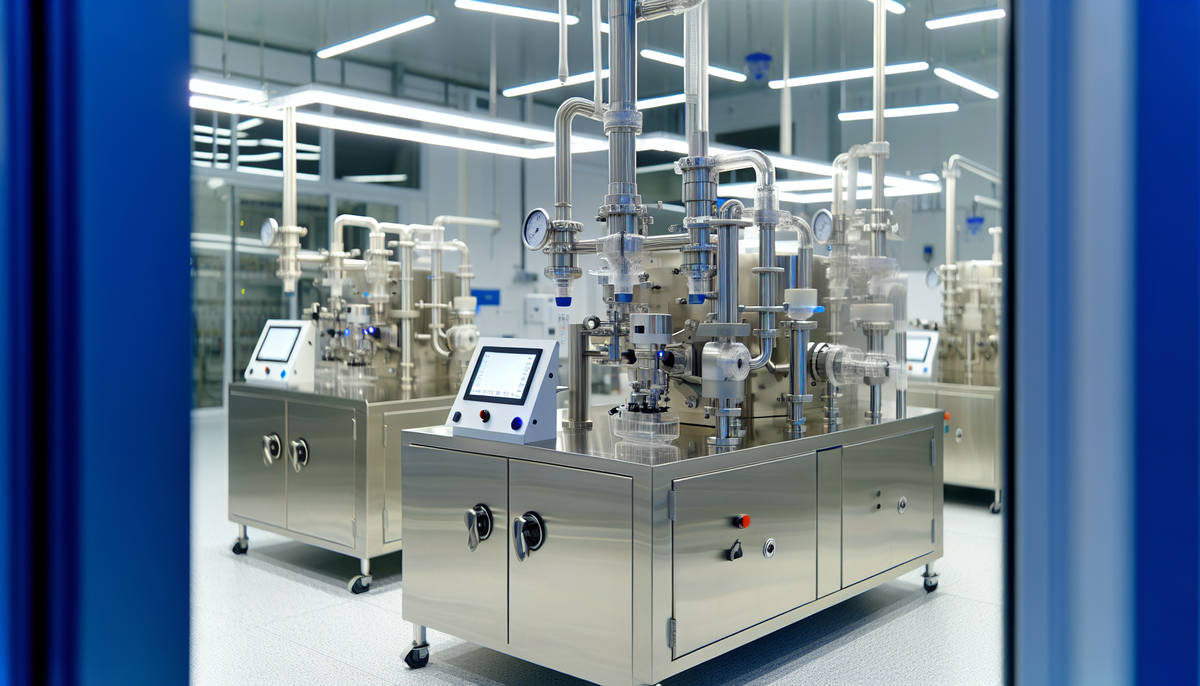How is CBD Oil Made? What You Should Know
Written by: Daniel Fayad, Subject Matter Expert and Website President
Published: March 15, 2024; Last updated: April 6, 2024
- 1. Key Takeaways
- 2. Unveiling the Extraction Techniques
- 2.1 The Role of CO2 in CBD Extraction
- 2.2 The Ethanol Extraction Method
- 2.3 Oil Infusion: A Traditional Approach
- 3. From Plant to Product: Stages of CBD Oil Production
- 3.1 Harvesting Hemp Plants
- 3.2 Refining the Extract
- 4. Distinguishing Between CBD Oil Varieties
- 5. Ensuring Quality and Purity
- 6. Carrier Oils and Their Significance
- 7. The Legal Landscape of CBD Oil Production
- 8. Health and Wellness Applications
- 9. Innovations in CBD Oil Manufacturing
- 10. Summary
- 11. Frequently Asked Questions
- 11.1 What is natural CBD oil made from?
- 11.2 How is CBD crude oil made?
- 11.3 Is CBD synthetic or natural?
- 11.4 Is CBD the same as marijuana?
- 11.5 What are the different methods of CBD oil extraction?
- 12. References
How is CBD oil made? The process begins with extracting vital compounds from the cannabis plant, followed by a series of refinements to achieve the pure, potent oil we use. In this article, you’ll learn about the main extraction techniques and subsequent refinement stages that ensure the oil’s quality and effectiveness.
Key Takeaways
CBD oil quality is influenced by the extraction method used, with Supercritical CO2, Soxhlet extraction, and maceration being standard techniques, each having unique advantages and environmental impacts.
CBD oil production involves several crucial stages, starting from hemp harvesting, typically between August and September, followed by a refining process through winterization and distillation to ensure the purity and potency of the final product.
CBD oil is available in various forms, including full-spectrum, broad-spectrum, and CBD isolate, with product quality assurance through third-party lab testing for potency and safety, ensuring accurate labeling and consumer trust.
Unveiling the Extraction Techniques

The extraction process largely determines the quality of CBD oil. Some standard extraction techniques include:
Supercritical CO2 extraction: This advanced technique is favored for its efficiency and effectiveness in preserving the phytochemicals derived from cannabis.
Soxhlet extraction: This traditional solvent-based method is still in use and offers a more cost-effective alternative.
Maceration: Another traditional solvent-based method that is used for extracting CBD oil.
Each extraction method has advantages and disadvantages, so choosing a CBD oil that has been extracted using a technique that aligns with your preferences and needs is essential. ¹
Advanced techniques like nonthermal pulsed electric field-assisted extraction and multi-solvent systems offer more efficiency by overcoming limitations such as long extraction times and potential degradation of compounds. The efficiency of the extraction process can be significantly influenced by factors such as the choice of solvent, temperature, duration, and agitation.
The Role of CO2 in CBD Extraction
Creating CBD oil often employs the highly advanced method of Supercritical CO2 extraction. It involves:
Grinding cannabis
Introducing solid CO2 to create Supercritical CO2
Running the Supercritical CO2 through plant materials to extract compounds
Separating the extract in a third chamber
This process is highly valued for preserving the natural compounds of the cannabis sativa, also known as the hemp plant, including cannabinoids and terpenes, resulting in high-quality CBD products. ¹
Being environmentally friendly, CO2 extraction offers several benefits for CBD production:
It reduces the need for extensive post-processing
It accelerates the speed of the market for CBD products
Its tunable nature allows for selective extraction of specific botanical compounds
It is ideal for producing both CBD isolate and full-spectrum CBD oil
The Ethanol Extraction Method

Making hemp seed oil also commonly employs the ethanol extraction method. Ethanol, a polar solvent, effectively extracts both polar and non-polar compounds, resulting in a rich, waxy concentrate of cannabinoids, terpenes, and essential fatty acids.
Using ethanol, the solvent extraction method dissolves cannabinoids and terpenes purified through evaporation to yield high-quality CBD extracts. Cold-temperature ethanol extraction limits the extraction of chlorophylls and waxes, eliminating the need for winterization, thus streamlining the extraction process. ¹
Oil Infusion: A Traditional Approach
Home enthusiasts commonly use the traditional approach of oil infusion to make their own CBD oil. Olive oil, in particular, is favored for its flavor and natural extraction approach. The process begins with decarboxylation of hemp to activate cannabinoids, followed by heating in olive oil to infuse the compounds into the oil.
Despite its simplicity, the sunflower oil infusion method is unsuitable for large-scale production due to the infused oil’s low yield and high perishability. Thus, it is often reserved for small-scale, personal use.
From Plant to Product: Stages of CBD Oil Production

Intricate in nature, the CBD oil production journey commences with the harvesting of mature hemp plants and ends with refining the extract for purity and potency. The growth cycle of hemp flowers spans around six months, with harvest times typically around August or September, provided the weather conditions are optimal.
After the hemp plants reach full maturity and the seeds are harvested, specialized machinery collects the cannabinoid-rich leaves and flowers from both hemp and cannabis plants. The harvested biomass is then dried in a controlled environment to preserve cannabinoids and prepare the material for extraction.
Harvesting Hemp Plants
The process of harvesting hemp plants requires careful timing. The plants are harvested at total growth, typically around August or September, using visual monitoring of trichomes shifting from white to milky white to indicate optimal harvest time. The weather plays a crucial role during harvest, with dry conditions essential to prevent cannabinoid degradation and mold growth.
A specialized combine harvester is employed to gather hemp leaves and flowers and to separate the stems for fiber production. The labor-intensive nature of the process often requires first-time growers to start with a small plot of less than an acre.
Refining the Extract
The refining process begins after the extraction of cannabinoids. Winterization is a critical step that removes fats, lipids, and other unwanted materials to create a higher purity of cannabinoids. The process involves the following steps: ¹
The non-polar oil extract is dissolved in a polar solvent like ethanol.
The mixture is then subjected to sub-zero temperatures to facilitate the separation of lipids.
After the separation, the solvent is evaporated, leaving behind a purified cannabinoid extract.
This winterization process is essential for producing high-quality cannabinoid products.
Distillation follows winterization, which employs heat to separate CBD from other compounds, further refining the oil. The refining process ensures the production of high-purity CBD oil and contributes to a better consumer experience by improving the taste and clarity of the final product.
Distinguishing Between CBD Oil Varieties
CBD oil comes in various varieties, each offering different benefits and levels of THC content:
Full-spectrum CBD contains natural cannabis plant extracts, terpenes, other cannabinoids, and up to 0.3% THC, offering a more holistic experience known as the ‘entourage effect.’
Broad-spectrum CBD contains natural cannabis plant extracts, terpenes, and other cannabinoids but no THC.
CBD isolate is the purest form, containing only CBD and no other compounds.
Broad-spectrum CBD, on the other hand, includes various cannabis plant compounds but usually has no THC, making it a safer option for those looking to avoid the psychoactive compound. CBD isolate is the pure form of CBD, free from other cannabis plant compounds, and is preferred by consumers who want to avoid THC altogether.
Ensuring Quality and Purity
When it comes to CBD oil, quality and purity take paramount importance. Third-party lab testing is crucial in confirming the accuracy of CBD content on labels, ensuring that consumers receive the intended benefits and avoid adverse effects. High-Performance Liquid Chromatography (HPLC) and Gas Chromatography with Mass Spectrometry (GC-MS) are used in potency testing to identify and quantify cannabinoids and terpenes, ensuring correct product labeling and dosage information.
In addition to potency, safety assessments screen for the following to protect consumer health:
Pesticides
Residual solvents
Heavy metals
Microbial contaminants
These rigorous testing standards ensure the quality and purity of CBD oil and build trust between consumers and manufacturers, allowing for informed product choice.
Carrier Oils and Their Significance

In CBD oil, carrier oils enhance bioavailability, preserve potency, and impact taste and consistency, playing a crucial role. They are essential in CBD products for dilution and strengthening the delivery of CBD into the bloodstream, improving the product’s bioavailability. The choice of carrier oil can also significantly impact the taste and consistency of CBD products, which is essential for consumer preferences, particularly in oral and topical applications.
Popular carrier oils include:
MCT oil, derived from coconut or palm kernel oil, is a popular carrier in CBD products due to its quick absorption, digestive ease, and efficiency in dissolving CBD.
Hemp seed oil
Olive oil
However, the choice of carrier oil must consider potential allergies as some individuals may have sensitivities to certain oils, such as those derived from nuts or fruits.
The Legal Landscape of CBD Oil Production
With regulations often focusing on THC content and licensing requirements, the legal landscape of CBD oil production varies by country and state. In the United States, the 2018 Farm Bill legalized the production of hemp-derived CBD products as long as they contain less than 0.3% THC. However, in other countries, the regulations can be much stricter. For instance, in Japan, CBD products must contain 0% THC, or they are considered illegal.
State-specific regulations in the United States vary, with some states allowing CBD with THC levels not exceeding 0.3%, while others restrict any THC content. Lab testing is essential to verify that full-spectrum CBD products adhere to the legal threshold of less than 0.3% THC content. With such a complex and diverse legal landscape, CBD manufacturers must stay informed and adapt to new laws.
Health and Wellness Applications
Numerous potential health and wellness applications are associated with CBD oil. Its analgesic properties show promise in pain management, especially for chronic pain conditions. CBD oil may effectively relieve various types of chronic pain, including nociceptive (body tissue), neuropathic (nerves), and mixed pain.
CBD also shows potential as an anti-inflammatory agent, which may benefit conditions like arthritis. Patients with arthritis reported a 44% reduction in pain after CBD use, suggesting potential benefits for pain management. CBD oil benefits include pain relief, relaxation, and the absence of mind-altering effects. Additionally, CBD oils have been gaining popularity for their therapeutic properties.
The health benefits may also help reduce some cancer-related symptoms and improve sleep quality in the health and wellness space.
Innovations in CBD Oil Manufacturing

Innovations enhance efficiency and product quality in the constantly evolving CBD oil industry. New extraction systems like the Apeks Supercritical Duplex and Eden Labs’ Hi-Flo FX2 are processing significantly larger volumes of botanical material daily, enhancing the scalability of CBD production.
Technological advancements have also led to optimizing cold ethanol extraction, increasing yield, reducing costs, and minimizing waste. The rise of new products and techniques, such as cannabinoid recrystallizations, reflects the industry’s commitment to harnessing different extraction solvents to produce innovative and high-demand products.
Summary
In a nutshell, CBD oil production is a complex process involving various extraction techniques, careful harvesting of hemp plants, rigorous refining of the extract, and meticulous quality control. Different varieties of CBD oil offer unique benefits, influenced by factors such as carrier oils and legal regulations. With numerous potential health and wellness applications and continuous innovations, the future of CBD oil production is promising and bound to evolve further.
Frequently Asked Questions
What is natural CBD oil made from?
Natural CBD oil is made from the stalks, leaves, and flowers of the hemp plant, which contain a higher concentration of CBD. This differs from hemp seed oil, which comes from the seeds of the Cannabis sativa plant.
How is CBD crude oil made?
CBD crude oil is generally made through an extraction process using solvents like ethanol or CO2 to remove the oil from plant biomass. The crude oil is then processed using distillation equipment to produce a pure product, typically THC or CBD distillate, by removing contaminants.
Is CBD synthetic or natural?
CBD is a natural compound found in hemp, binding to cannabis receptors in the body. It is not synthetic.
Is CBD the same as marijuana?
CBD is not the same as marijuana. While CBD is a component of medical marijuana, it is derived from the hemp plant and does not cause a “high” as marijuana does.
What are the different methods of CBD oil extraction?
The three primary methods of CBD oil extraction are supercritical CO2 extraction, ethanol extraction, and oil infusion. Each method has its advantages and drawbacks, so choosing the method that best suits your needs is important.
References
Lazarjani, M. P., Young, O., Kebede, L., & Seyfoddin, A. (2021). Processing and extraction methods of medicinal cannabis: a narrative review. Journal of cannabis research, 3(1), 32. https://doi.org/10.1186/s42238-021-00087-9
Rochfort, S., Isbel, A., Ezernieks, V., Elkins, A., Vincent, D., Deseo, M. A., & Spangenberg, G. C. (2020). Utilisation of Design of Experiments Approach to Optimise Supercritical Fluid Extraction of Medicinal Cannabis. Scientific reports, 10(1), 9124. https://doi.org/10.1038/s41598-020-66119-1
de Aguiar, A. C., Vardanega, R., Viganó, J., & Silva, E. K. (2023). Supercritical Carbon Dioxide Technology for Recovering Valuable Phytochemicals from Cannabis sativa L. and Valorization of Its Biomass for Food Applications. Molecules (Basel, Switzerland), 28(9), 3849. https://doi.org/10.3390/molecules28093849

Written by Daniel Fayad - Subject Matter Expert and Website President
Dan Fayad is a results-driven healthcare administration expert and content writer. With a Master of Health Administration from the University of Southern California, he’s carved a niche for himself in the dynamic world of healthcare and business development. Dan uses his experience to educate and empower people on their wellness journeys.
Join the CBDeals Club!
Get 10% off your first order and receive our best and exclusive promotions directly to your inbox!

